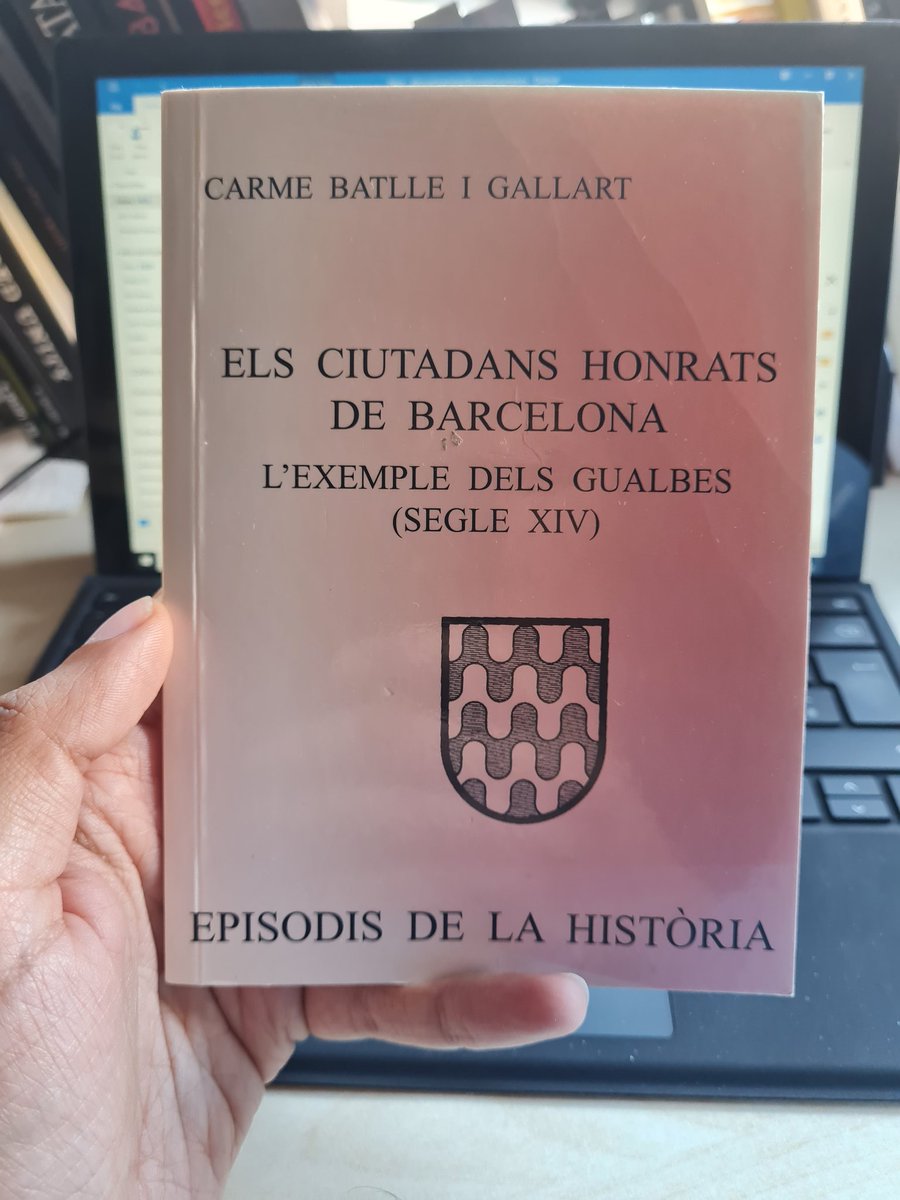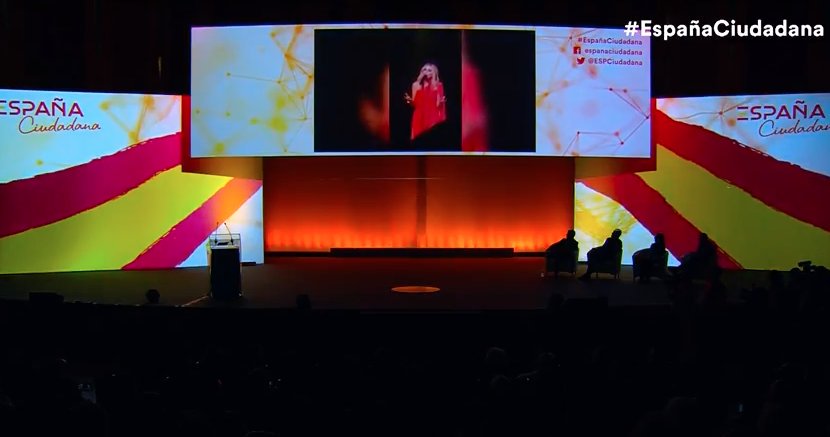1. 430 years ago today, May 24, 1591, Joan Granollacs, a member of the Diputació del General, was walking down Carrer Montcada when a group of royal officers tried to arrest him. But who was Granollacs and why is he a key person in our history?
2. Joan Granollacs, as I was just saying, was a member of a family of the Catalan petty nobility of the 16th century, who had made money first through trade (cloth shopkeepers or wheat or cotton merchants) and then running the Generalitat (the Government of Catalonia)'s tax collection.
3. But Granollacs was not only that, he was also a very popular man and committed to defending the laws of the land and the Catalan constitutions against the authoritarian abuses of Philip II and the royal apparatus in Catalonia.
4. THis was so much so that when Granollacs was about to be arrested, perhaps leaving near Casa Bru (of the first houses on Montcada Street, owned by the Bru family of bankers, with whom he was related), a mass of people protected him from the royal agents.
5. The crowd, in which it seems that the brothers Miquel and Llorenç Junyent, among others, took part, defended Granollacs while shouting "Long live the Generalitat, death to the traitors of our country!".
6. Granollacs escaped and reached the "Casa del General" (presumably the current Palace of the Generalitat but without the Sant Jaume façade or the whole section of the Sant Jordi hall, which were built around 1600) where he took refuge with his followers.
7. The Diputación del General (the "government" of the day) quickly convened a Junta de Braços (the permanent committee) and an "Eighteenth" (a commission) was appointed to deal with the conflict and legally protect Granollacs's followers and himself.
8. "If the royal officials were tio be able to prosecute the persons of said deputies and hearers, they would not have liberty to defend the privileges, chapters of the court and liberties of the country, for by any slight matter they would be threatened with imprisonment."
9. And this is what the Diputación del General argued in defence of Granollacs. That the deputy should be immune from any attempted arrest by royal officials for his defence of the rights and freedoms of the country, that is, of Catalonia.
10. The conflict between the Catalan institutions and Philip II came from afar, and as early as 1569 the monarch had used the Inquisition to imprison deputie sat that time.
11. A few years earlier, in 1587-88, another conflict had broken out between the monarchy and the Catalan institutions, which was finally resolved after many negotiations.
12. So there were precedents to the 1591 conflict. And out of the bad relations between them arose the clash, after some irregular arrests by the king's officials (including those of Bernardí, and Antoni de Granollacs, brother of our protagonist).
13. The response of the country's institutions was the imprisonment of the three royal officials who had made the captures. Philip II, through the Council of Aragon, reacted by instructing the new viceroy, the master of Montesa, to immediately arrest the deputy Granollacs.
14. So on May 24 1591, 430 years ago today, the deputy Granollacs was entrenched with his followers in the Casa del General with the support of the government (Diputació) and the city's Consell de Cent (Council of the One Hundred). In the face of this, the Hispanic reaction was not long in coming.
15. The viceroy threatened to move the seat of the Courts (the royal courts, which also acted as judges of the constitutional conflicts between the monarchy and the Catalan institutions) outside Barcelona and as far as Perpignan.
16. This action weakened the Catalan position and the Consell de Cent itself began to weaken its position on the Granollacs affair at the same time as did the ecclesiastical deputy, President of the Generalitat and Bishop of Girona, Jaume Cassador.
17. Months passed and the divisions intensified while the deputy Joan Granollacs and his followers were still inside the Palau de la Generalitat.
18. Finally, on April 22, 1592, 11 months later, seeing that there was no longer any consensus and that Philip II would send the royal army to repress them as he had done in Aragon, Granollacs and company left Barcelona and Catalonia and went into exile.
19. Eleven months had been spent in the Palau de la Generalitat! Granollacs went into exile in Avignon where I understand that he must have lived until a little afyter 1599, when Philip III of Castile, after the death of Philip II, granted a kind of amnesty to all those involved.
20. Granollacs' comrades also went into exile outside Catalonia. One of them, Perot Tamarit, chief councilor (Mayor) of the city of Barcelona. If I understand correctly, he was the father of Francesc de Tamarit, a member of the Generalitat later imprisoned by Philip IV of Castile in 1640.
21. History has more ins and outs than you will find in some books that I will recommend at the end, but this serves to remind you that as early as 1591 there were Catalana in exile for defending the rights of Catalan institutions agaist the abuses of Castilian-Spanish authoritarianism.
22. The fact is that the history of Granollacs also serves to remind us that the institutional conflict between Catalonia and the Spanish monarchy / Spanish State comes from long ago. Far earlier than the Franco regime or the tragic defeat in 1714.
23. Today Joan Granollacs is an almost unknown figure in the history of Catalonia (he doesn't even have a street in any town in the country). Bringing him out of oblivion is a duty of respect for all generations of Catalans who have fought for the rights and freedoms of Catalonia.
24. If Granollacs and his roup had to go into exile in 1591 in order to defend the cause of the liberties of Catalonia, what does this mean for today’s Catalans? How many Catalans have had to suffer imprisonment, exile and repression for confronting Hispanic authoritarianism?
25. How many more will they have to do? This is the question that the Catalans of 2021 must answer if we want to honour the men and women, often anonymous, who have preceded us.
26. A final curiosity is that one of the jurists involved in the Granollacs affair and who defended the Catalan constitutionalist position versus royal authoritarianism, was Misser Aillà, who a few years later worked in Olot, where he met a young jurist: Joan Pere Fontanella!
27. Joan Pere Fontanella (yes, his is the name of the street that leads to Plaça Urquinaona[in Barcelona] years later would be one of the ideologues that led to the proclamation of the ephemeral Catalan Republic under the leadership of Pau Claris. The common thread of Catalan constitutionalism ...
P.S. To find out more:
1. I learned about the importance of the figure of Joan Granollacs thanks to ‘Els orígens ideològics de la revolució catalana de 1640' (The ideological origins of the Catalan revolution of 1640) by Professor Antoni Simón. Expand the context can be expoeaded with ‘La formació de la Catalunya Moderna' (The formation of Modern Catalonia) by Eva Serra.
But the book that anyone interested in the figure of Joan Granollacs has to dread is ‘Entre el rei i la coyntry’ (Between King and Country) by the great @miquelpzlatre. He is the one who has best explained his figure and given it the dimension it deserves. With all my heartfelt thanks.
P.S. (Final)
I really wanted to write this thread because the figure of Granollacs has made a deep impact on in recent years. I hope that everything is as correct as possible and that the historians who have worked on him will be able to make his figure much better known in the coming years.
1.Vaig conèixer la importància de la figura de Joan Granollacs gràcies a ‘Els orígens ideològics de la revolució catalana de 1640’ del professor Antoni Simón. Ampliar el context amb ‘La formació de la Catalunya Moderna’ d’Eva Serra.
Però el llibre que ningú que tothom que estigui interessat en la figura de Joan Granollacs és ‘Entre el rei i la terra’ del gran @miquelpzlatre. Ell és el qui millor ha explicat la seva figura i li ha donat la dimensió que es mereix. De tot cor, moltes gràcies.
Em feia ilusió escriure aquest fil perquè la figura de Granollacs m'ha marcat molt els darrers anys. Espero que tot sigui el més correcte possible i que els historiadors que hi han treballat puguin fer conèixer molt més la seva figura els propers anys.
• • •
This Thread may be Removed Anytime!
Twitter may remove this content at anytime! Save it as PDF for later use!
Try unrolling a thread yourself!

- Follow @ThreadReaderApp to mention us!
- From a Twitter thread mention us with a keyword "unroll"
@threadreaderapp unroll
Practice here first or read more on our help page!
More from @aleixsarri


